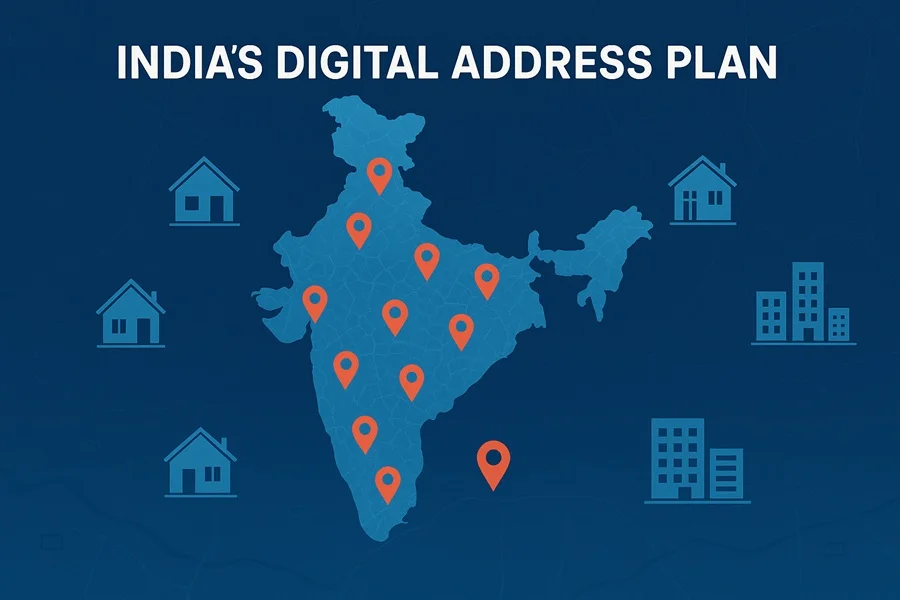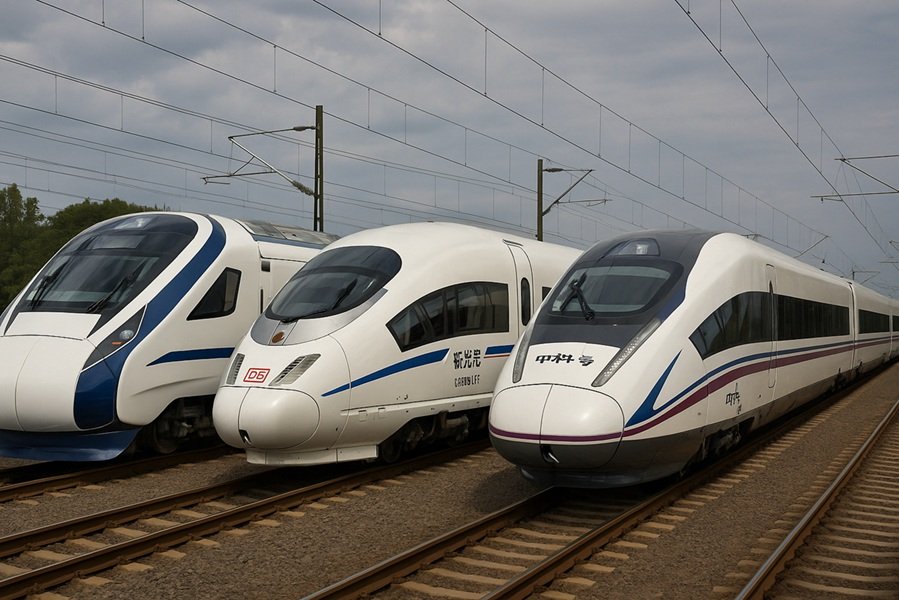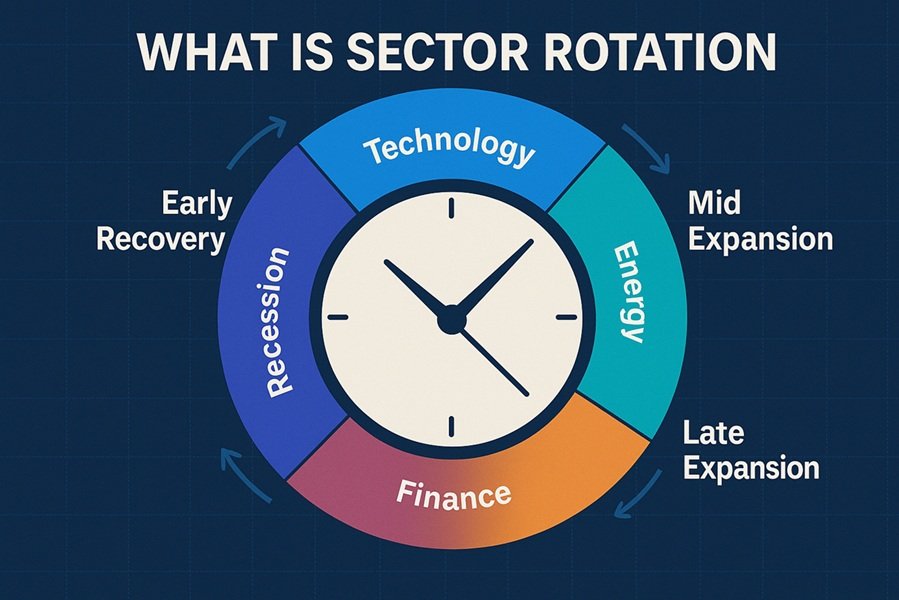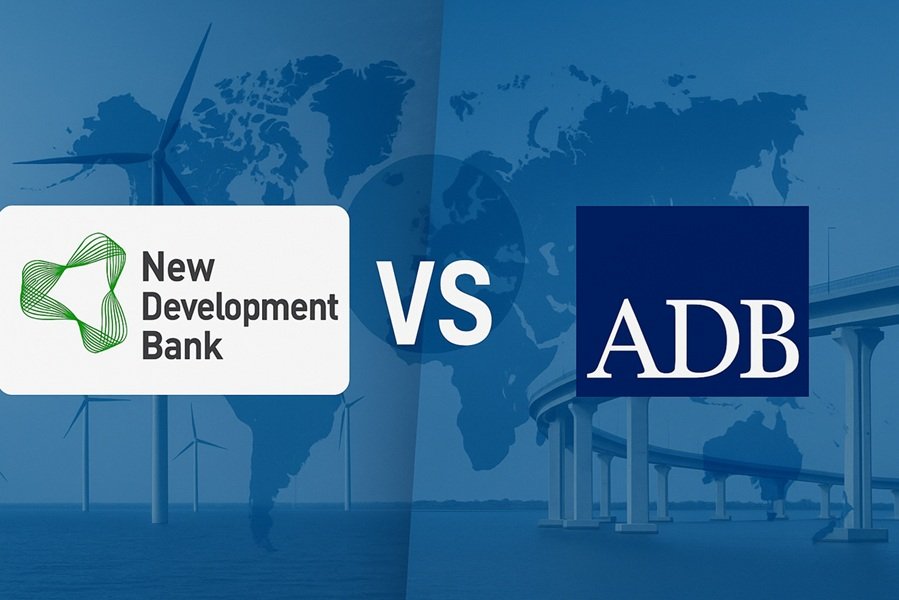
India’s Digital Address Plan: A New Era in Location-Based Identity
Introduction
India is on the brink of yet another digital transformation—this time, in how physical locations are identified and managed. Building on the success of initiatives like Aadhaar for individuals and UPI for payments, the Government of India is preparing to roll out the Digital Address Plan (DAP).
This ambitious initiative will assign unique digital IDs to every address, from homes and offices to shops and institutions. By standardizing addresses nationwide, the plan aims to enhance delivery services, governance, emergency response, urban planning, and overall transparency. It represents a major leap forward in India’s Digital Public Infrastructure (DPI).
What Is India’s Digital Address Plan?
The Digital Address Plan is a government-backed framework that creates digital identities for physical locations, functioning much like Aadhaar does for citizens. Every location will be geo-tagged and standardized, making it usable across both public and private platforms.
The system is designed to work seamlessly with India’s growing DPI ecosystem, complementing services such as DigiLocker, UPI, and e-governance portals, while reducing inconsistencies and improving efficiency.
Why Is a Digital Address System Needed?
India’s current addressing system suffers from lack of standardization, resulting in confusion, delivery delays, and administrative inefficiencies. Common issues include:
- Non-uniform formats across states and cities
- Vague references like “near the temple” or “behind the market”
- Frequent logistics and e-commerce failures due to poor geocoding
- Administrative challenges in land records, taxation, and public welfare schemes
Industry estimates suggest that inefficiencies in addressing cost India $10–14 billion annually in lost deliveries, duplicated efforts, and wasted time.
Key Features of the Digital Address Plan
1. DIGIPIN (Digital Postal Index Number)
Launched by the Department of Posts, DIGIPIN is a new framework for digital postal codes.
- Developed with IIT Hyderabad and NRSC/ISRO support
- Provides grid-based, geo-coded addresses
- Open-source and interoperable, complementing traditional PIN codes
- Facilitates GIS mapping and precise service delivery
Citizens can access two portals for ease of use:
- Know Your DIGIPIN
- Know Your PIN Code
2. eLoc by MapmyIndia
eLoc is a private-sector innovation providing six-character digital codes that uniquely identify every location in India.
- Each eLoc code corresponds to a precise geolocation, including building details
- Integrates with navigation apps, e-commerce platforms, and emergency services
- Functions as the “Aadhaar for addresses,” eliminating reliance on complex textual addresses
Advantages of a Digital Address System
1. Improved Public Service Delivery
Government programs like welfare distribution, gas delivery, and utility billing become more accurate, reducing delays and fraud.
2. Enhanced Emergency Response
Accurate geo-tagged addresses help responders reach disaster sites or patients faster, potentially saving lives.
3. Streamlined Logistics and E-Commerce
Delivery services benefit from reduced errors, faster routes, and automated address verification.
4. Urban Planning and Governance
Digital addresses assist in:
- Infrastructure planning
- Land record management
- Tracking illegal construction
- Smart city initiatives
5. Economic Benefits
By eliminating inefficiencies, the system can save billions and improve productivity in commerce, logistics, and government operations.
Data Privacy and Consent
The Digital Address Plan follows strict digital ethics principles. Sharing of address data will require user consent, ensuring privacy and autonomy similar to Aadhaar-based services.
Integration With Other Digital Infrastructure
The initiative is designed to integrate with India’s broader digital ecosystem:
- Aadhaar: Identity verification
- DigiLocker: Linking documents to addresses
- UPI and E-Commerce: Precise billing and delivery
This integration enables a holistic digital ecosystem, where identity, location, and financial data work seamlessly together.
Challenges and Considerations
Implementing a nationwide digital address system presents several hurdles:
- Digital literacy gaps, particularly in rural regions
- Integration with existing legacy systems
- Coordination between central, state, and local governments
- Ensuring inclusivity for remote and marginalized communities
Road Ahead
The Digital Address Plan is currently in its pilot phase, involving collaborations between:
- Department of Posts
- IIT Hyderabad
- IISc Bengaluru
- MapmyIndia
- ISRO
- Other private sector innovators
Once implemented nationwide, India could become one of the first large economies with a fully digital, standardized address infrastructure.
Conclusion
India’s Digital Address Plan promises to be as transformative as Aadhaar or UPI. By providing every location with a unique, verifiable digital identity, the initiative strengthens governance, streamlines logistics, enhances emergency response, and facilitates smart urban planning.
In a world where location matters more than ever, India is set to lead the way with a bold, innovative, and inclusive solution—one digital address at a time.








